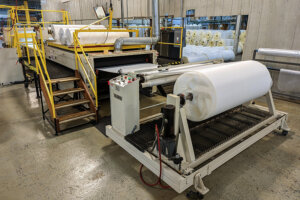The Customized Laminating Machine: How Does It Work?

Is it worth getting a laminator?
Before you buy a customized laminating machine, you understandably will consider the overall value of the investment. And while some laminating machines are rather affordable, you’re always investing in your future projects when you buy a laminator, right? So you want to get your money’s worth and spend it on the machine—or process—that’s right for you.
If your project is somewhat small, you naturally won’t need as large a machine. Generally speaking with lamination, the smaller the machine, the lower the cost (though this isn’t necessarily the case across the board). Keep in mind, however, that you’re not just spending money on the machine, but also the additional materials—the pouches, for example. Not only does this up the cost—if you don’t want to spend a lot of time on laminating, it may also up the expense of time.
If you’re looking for the best industrial laminator possible, however, expect to spend a bit more. An industrial laminator can produce a higher volume of product at greater speeds, and with much more efficiency. Additionally, you’ll typically see more consistency from an industrial customized laminating machine. While you’ll observe that smaller laminating machines are more subject to human error, an industrial laminator tends to be less prone to mistakes, while still allowing you to customize the procedure.
Of course, you don’t necessarily have to invest in a customized laminating machine outright. Consider outsourcing to a third party if you’re scaling up. Not only does this ensure a smoother process (you don’t have to worry as much when the experts are handling your order!) it also ensures that you don’t have to invest permanently in a machine before you’re ready.
What is the best customized laminating machine for a small business?
As you consider different types of laminating machines, you’ll discover that your options vary—and the right one for your small business will depend in part on the products you manufacture, along with your general needs. Some of the most common types of laminators (including the ever-prized customized laminating machine) include:
- Hot pouch laminators. These are among the most popular options offered when we need to encapsulate a document. After we coat the pouch with a heat-activated film, we pass it through heated rollers. It melts, and the pressure bonds the sides. No bubbles, and you can rely on a tight seal.
- Cold pouch laminators. If you’re working with heat sensitive documents, this type of customized laminating machine is one of the best choices. Think faxes, photos, and documents printed with an ink-jet printer. It offers better UV protection than hot pouch lamination, and this method relies on an adhesive and pressure, which means you don’t use any electricity. It’s a safer method.
- Cold roll feed laminators. These laminators use encapsulating film to mount prints on board; they can also apply vinyls and adhesive film, making them ideal for commercial printers, as well as copy and print shops and sign makers.
- Single hot roll feed laminators. These encapsulate a heat-activated thermal film, which we then apply to one side of the print. One advantage of this lamination technique is that it offers both glossy and matte finishes.
- Double hot roll feed laminators. This process is similar to the single hot roll technique, but covers both sides of the print.
- Cold basic roll feed laminators. We recognize this lamination process for delivering the most premium results, with a heavy duty cold laminator system perfect for sign makers, graphic design, print shops, and vinyl and tape applicators. For some manufacturers, this is the best industrial laminator.
What does a coating machine do?
If you’re looking into lamination, you’ll probably hear something about coating machines. A coating machine, at its most simple, coats a surface with a thin film layer. We use different types of coating procedures throughout manufacturing, as well as different coating machines.
For example, consider gravure coating, which is a process that takes one rubber covered roll and one steel or ceramic covered roll coater. With this procedure, we apply and meter the coating onto an engraved roll, using a pan. We accompany this with either a single blade system, or a knife-over-roll system that is enclosed. Now, even within the scope of gravure coating, there are several different variations and methods.
We see subtle differences between lamination and coating. A coating procedure often relies upon heat curing to solidify the coating, as it’s initially in that liquid coat form. This allows for a certain degree of variation regarding engraving, as well as some form of flexibility. On the other hand, lamination usually involves adhering a sheet of some kind onto paper. The benefit of this process, of course, is that we often end up with a more durable final product. Again, we can customize both processes in order to get the final product you want. But consider the pros and cons before choosing between lamination and coating. No process is perfect for every project, after all.
Need more insight about your project and the right process for it? Don’t worry, CTI has the insight you need. Call us at 419-924-5566 or contact us here for more information!
- << < Previous Post
- 1
- 2
- ...
- 27
- ...
- 250
- 251 Next Post > >>

